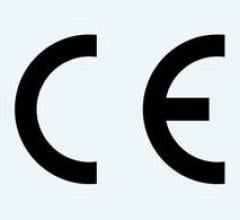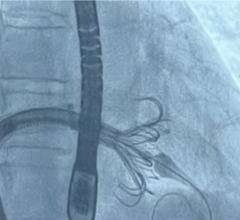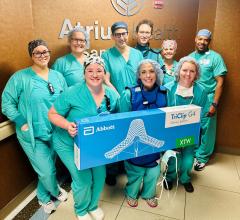
CoreValve transcatheter aortic valve system
February 11, 2010 — An appeals court in Germany found the CoreValve transcatheter aortic valve system does not infringe Edwards Lifesciences’ German Andersen patent used in its SAPIEN aortic valve.
The appellate court’s decision upholds a lower court’s ruling and enables uninterrupted access to the transcatheter heart valve in Germany.
“We are gratified but not surprised by today’s ruling,” said Scott Ward, president of the cardiovascular business and senior vice president at Medtronic. “We look forward to similar outcomes in the U.K. and the United States.”
Court proceedings in the United Kindom, involving the U.K. counterpart to the German Andersen patent, are scheduled to resume May 14 in London with an appeal from the trial court. As in Germany, the U.K. trial court found in January 2009 that CoreValve devices do not infringe the Edwards’ U.K. Andersen patent. In the United States, the U.S. District Court of Delaware is scheduled to begin a trial on March 23 involving related U.S. patents.
"While we are disappointed by this decision on infringement, we will continue to rigorously enforce our leading intellectual property portfolio in this field. We look forward to the trial on the U.S. Andersen patents beginning next month," said Larry L. Wood, Edwards' corporate vice president, transcatheter valve replacement.
Last month, the Federal Patent Court in Munich, Germany, upheld the validity of Edwards' patent for transcatheter valve technology and Edwards succeeded in having CoreValve's invalidity claims dismissed on all grounds.
Medtronic contends that CoreValve devices do not use the technology disclosed and claimed in the Andersen patents. As a result, the company maintains that it does not need a license to those patents in order to sell CoreValve devices.
The CoreValve transcatheter aortic valve system is designed to enable replacement of a diseased aortic valve without open-heart surgery and without surgical removal of the diseased valve. The replacement valve is delivered through a catheter inserted into a small opening in an artery in the patient’s leg. As the replacement valve is deployed, the diseased valve is pushed aside, replaced by the new valve, which begins working immediately to improve blood flow from the heart to the rest of the body.
The CoreValve System is not currently available in the United States for clinical trials or for sale. The Anderson patent is set to expire in May 2011.
For more information: www.edwards.com, www.medtronic.com


 March 31, 2025
March 31, 2025 








